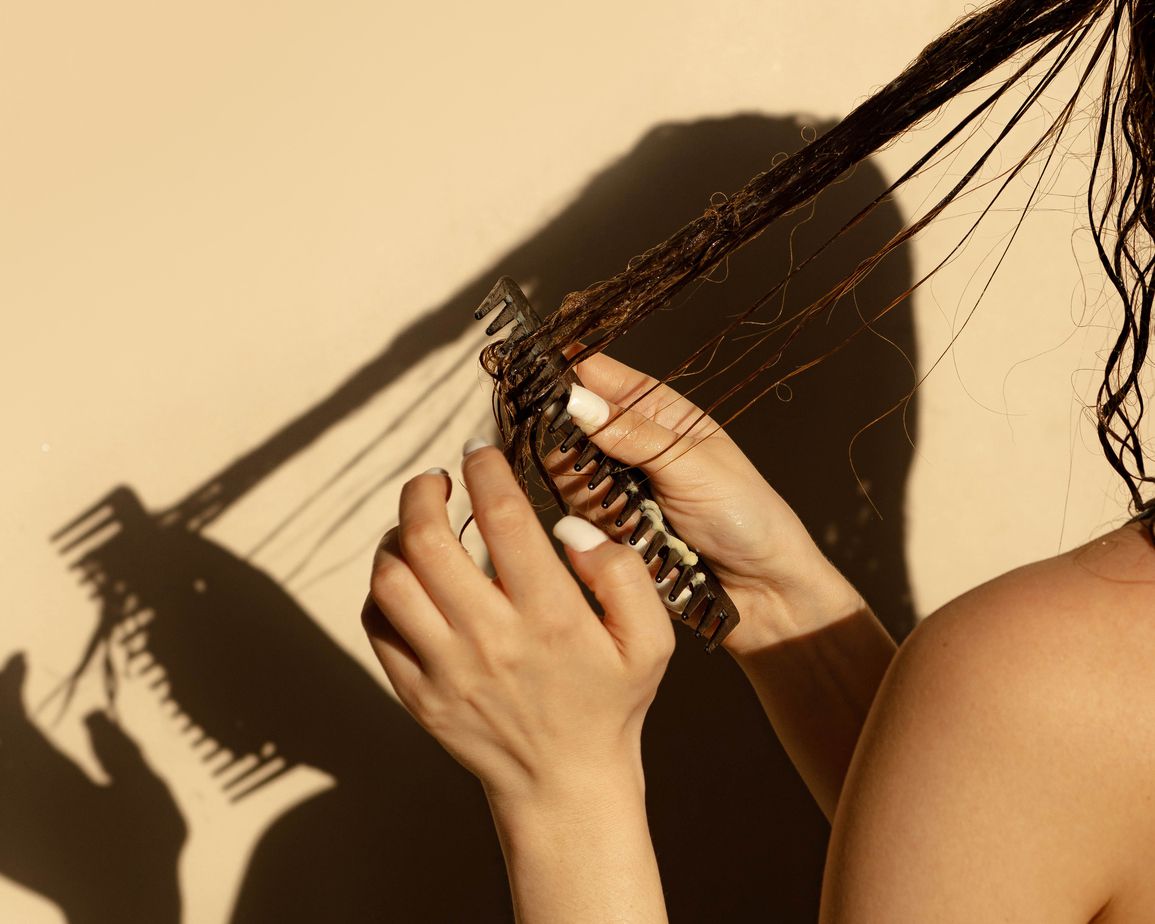The snag of a brush colliding with a tangle is painful on multiple levels—physically, of course, but also emotionally, as you can often hear the breakage it causes. Anyone with hair long enough to brush knows that tangles are an unavoidable consequence of lengthy locks. But while some degree of tangling is to be expected, there may be some behaviors or products that contribute to the frequency and severity of your tangles.
Tangles are typically made up of a combination of “live” hair still attached to your scalp and “dead” hair that has already been shed from your scalp. The approach to tackling tangles is multi-faceted, as you need to remove the shedded hair without causing further damage to the live hair. There are steps you can take to avoid creating tangles, as well as best practices for detangling them once they have formed.
In order to understand the full story behind what contributes to tangles, we turned to two hair experts: trichologist Karen Flowers and dermatologist Iris Rubin, MD. Keep reading for their advice on the best way to prevent and tackle tangles.
Meet the Expert
- Karen Flowers is a licensed cosmetologist, certified trichologist, and the founder of Curl House.
- Iris Rubin, MD, is a board-certified dermatologist and the co-founder of SEEN Haircare.
01
of 08
Use a Sulfate-Free Shampoo
:max_bytes(150000):strip_icc()/gisou-d3012ad40dd4408b97f66c3af2ba8ab0.png)
:max_bytes(150000):strip_icc()/DeeperConditioner-1_1296x1296copy-a83fa0c9102a4ac3ac4597f856c4b3d3.jpg)
:max_bytes(150000):strip_icc()/DeeperConditioner-1_1296x1296copy-a83fa0c9102a4ac3ac4597f856c4b3d3.jpg)
SEEN
Deeper Conditioner
$28.00
Buildup can cause all sorts of problems for the hair, but it can also cause tangles. You have likely tried products that made your hair feel sticky or tacky and it’s obvious to see where those contribute to tangling. One less obvious perpetrator is silicones, as these tend to build up slowly on the hair and actually make it feel smoother to the touch. But over time, this buildup can create tangle-causing friction in the hair as well.
Rubin recommends using a conditioner that will not contribute to buildup on the hair. “A high-quality conditioner is a must, and if you comb your hair before rinsing and gently blot the hair dry this will help reduce tangles significantly,” she says. “SEEN’s conditioners contain an ingredient called hemisqualane, which is a natural alternative to silicone that’s derived from plant sugar. It smoothes the hair cuticles to help prevent tangles, and makes for easier combing and brushing.”
08
of 08
Deep Condition Regularly
Hydration is essential to keeping hair elastic and less likely to break, as dry hair is more prone to friction and tangling. As such, regular deep conditioning treatments can improve both the health and appearance of your hair. Flowers recommend super hydrating conditioners that will help give the hair “slip” when detangling. “One such example is the Curl House’s Follicle Stimulating Growth Conditioner ($28), which contains botanicals, humectants, and oils that maximize moisture and provide excellent slip for both conditioning and detangling,” she says.
How to Detangle Extremely Matted Hair at Home










